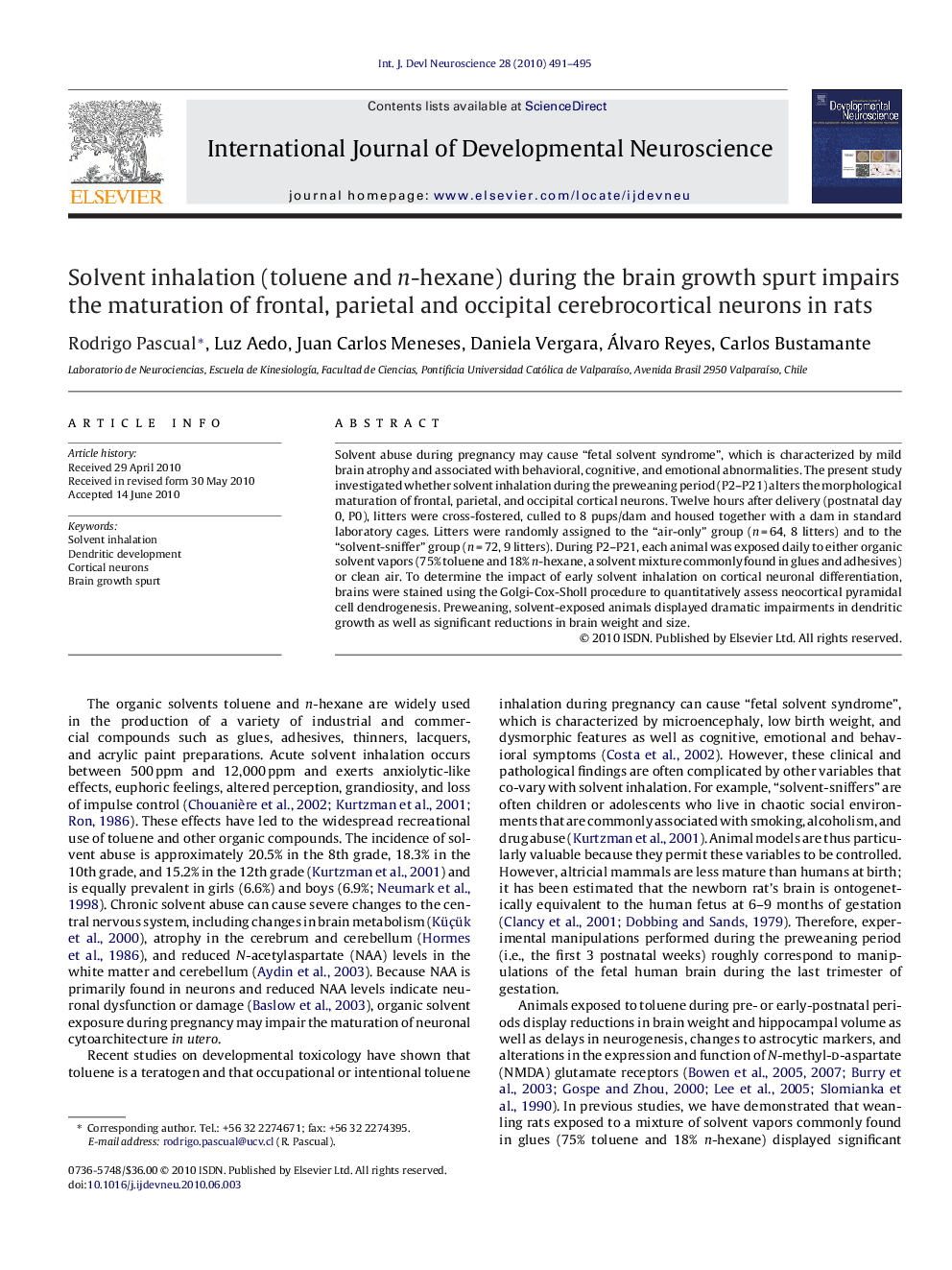| Article ID | Journal | Published Year | Pages | File Type |
|---|---|---|---|---|
| 2786605 | International Journal of Developmental Neuroscience | 2010 | 5 Pages |
Solvent abuse during pregnancy may cause “fetal solvent syndrome”, which is characterized by mild brain atrophy and associated with behavioral, cognitive, and emotional abnormalities. The present study investigated whether solvent inhalation during the preweaning period (P2–P21) alters the morphological maturation of frontal, parietal, and occipital cortical neurons. Twelve hours after delivery (postnatal day 0, P0), litters were cross-fostered, culled to 8 pups/dam and housed together with a dam in standard laboratory cages. Litters were randomly assigned to the “air-only” group (n = 64, 8 litters) and to the “solvent-sniffer” group (n = 72, 9 litters). During P2–P21, each animal was exposed daily to either organic solvent vapors (75% toluene and 18% n-hexane, a solvent mixture commonly found in glues and adhesives) or clean air. To determine the impact of early solvent inhalation on cortical neuronal differentiation, brains were stained using the Golgi-Cox-Sholl procedure to quantitatively assess neocortical pyramidal cell dendrogenesis. Preweaning, solvent-exposed animals displayed dramatic impairments in dendritic growth as well as significant reductions in brain weight and size.
Research highlights▶ Preweaning solvent inhalation (toluene and n-hexane) during brain growth spurt alters the morphology of cortical pyramidal cells in the rat. ▶ These neuronal impairments are related with significant reductions in brain weight and size. ▶ These findings are consistent with the so-called “fetal solvent syndrome”.
